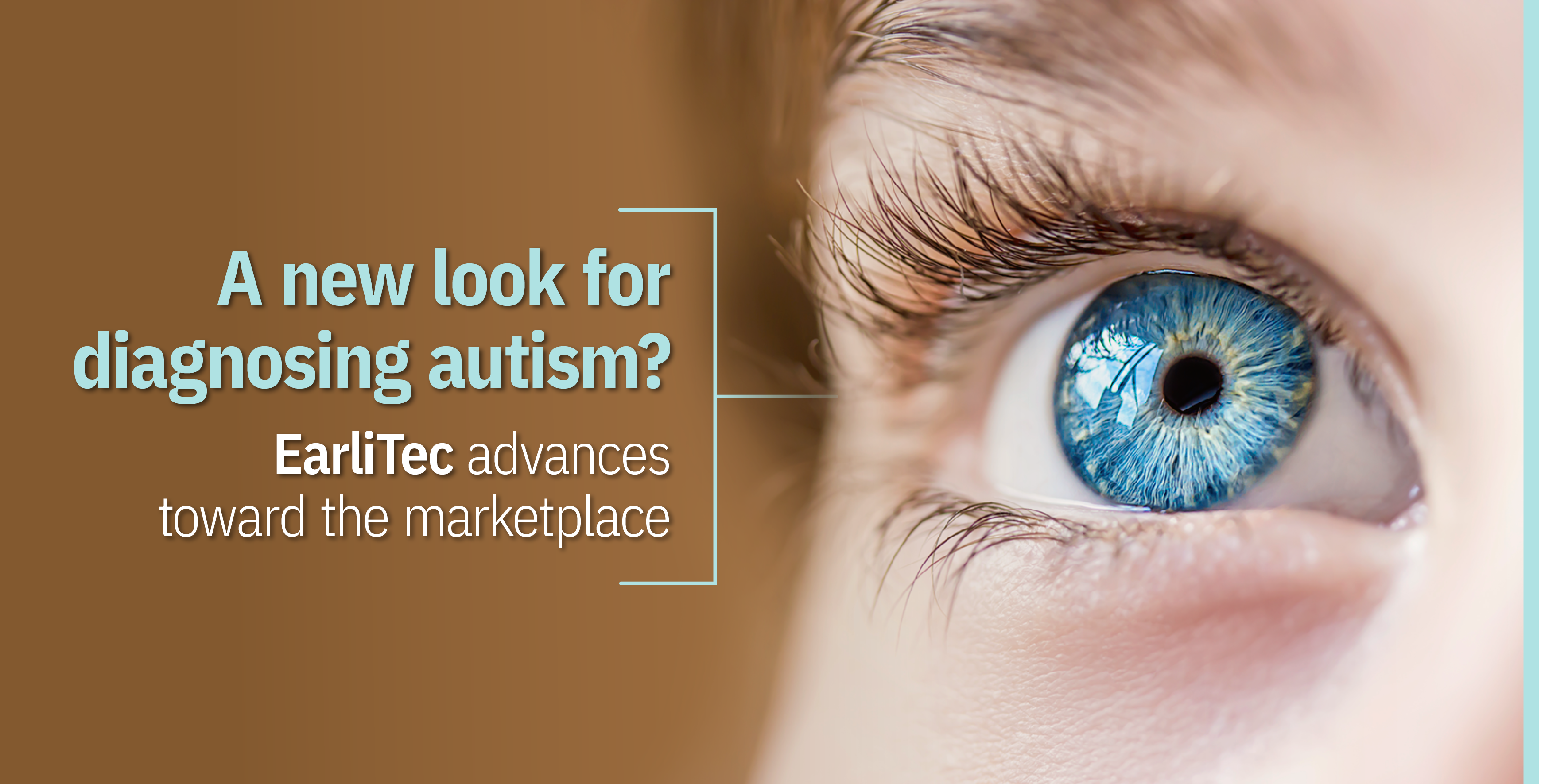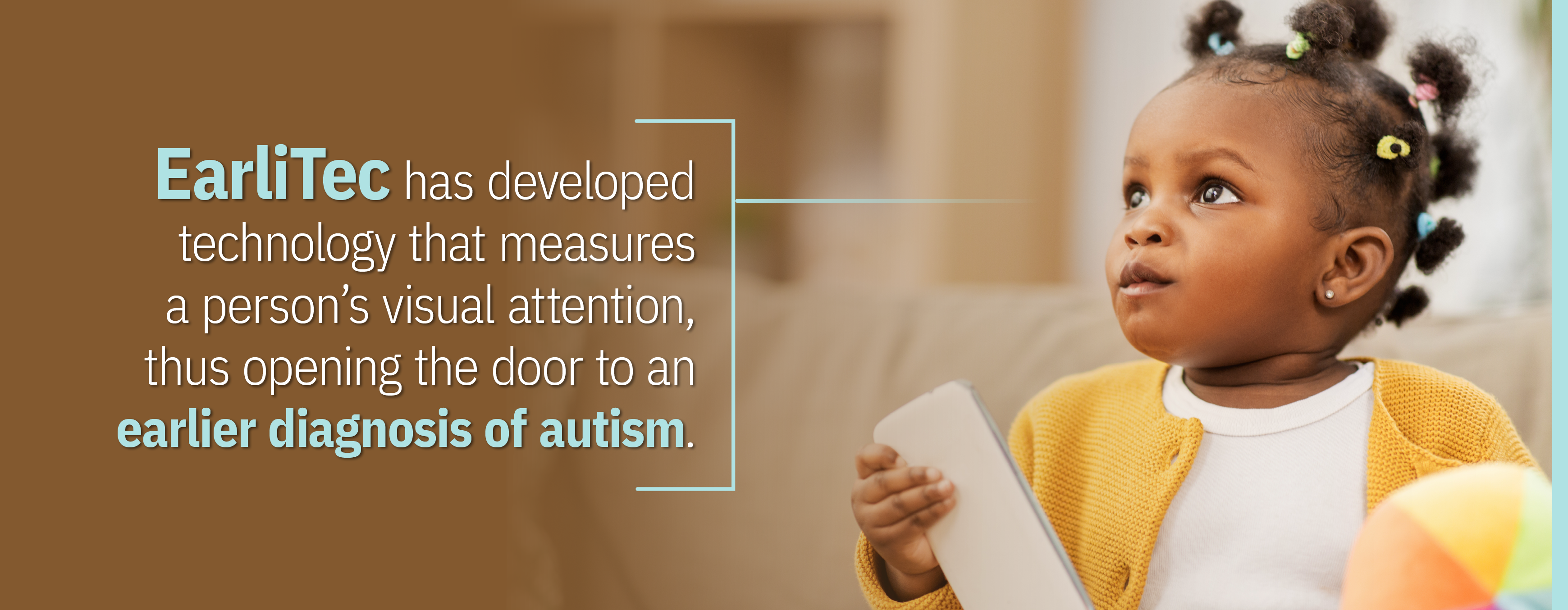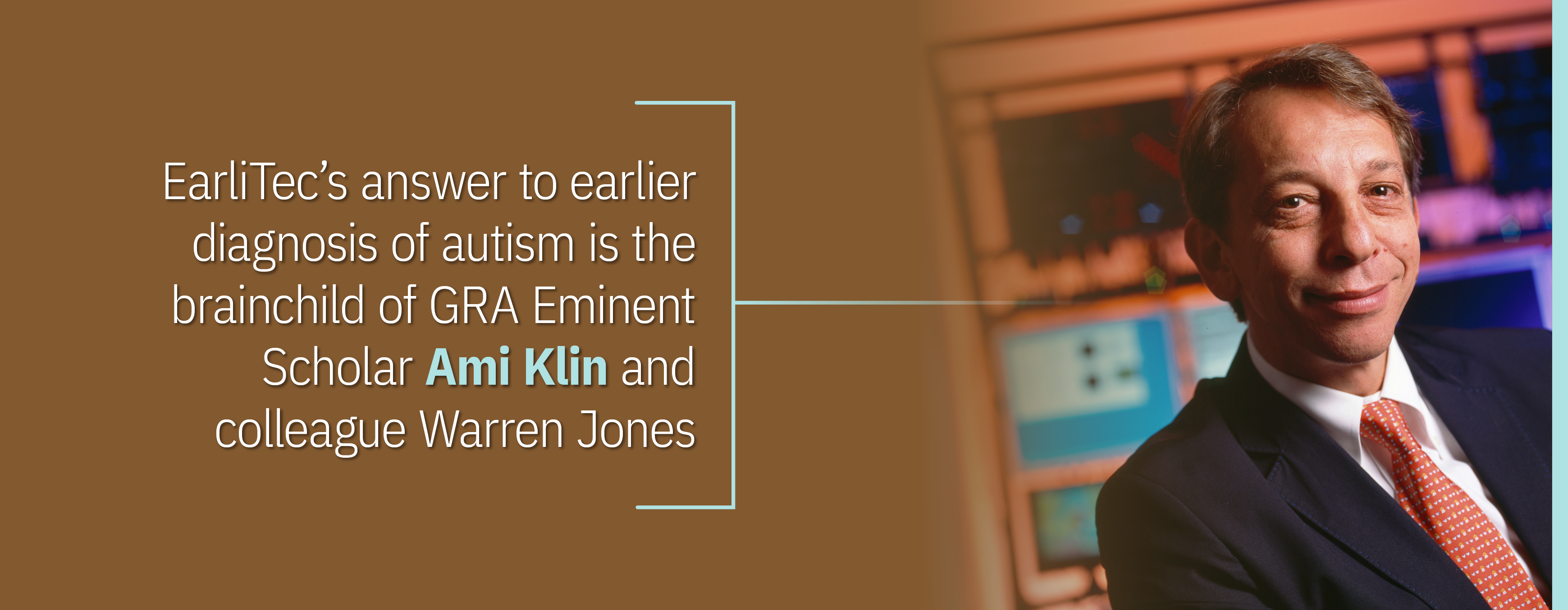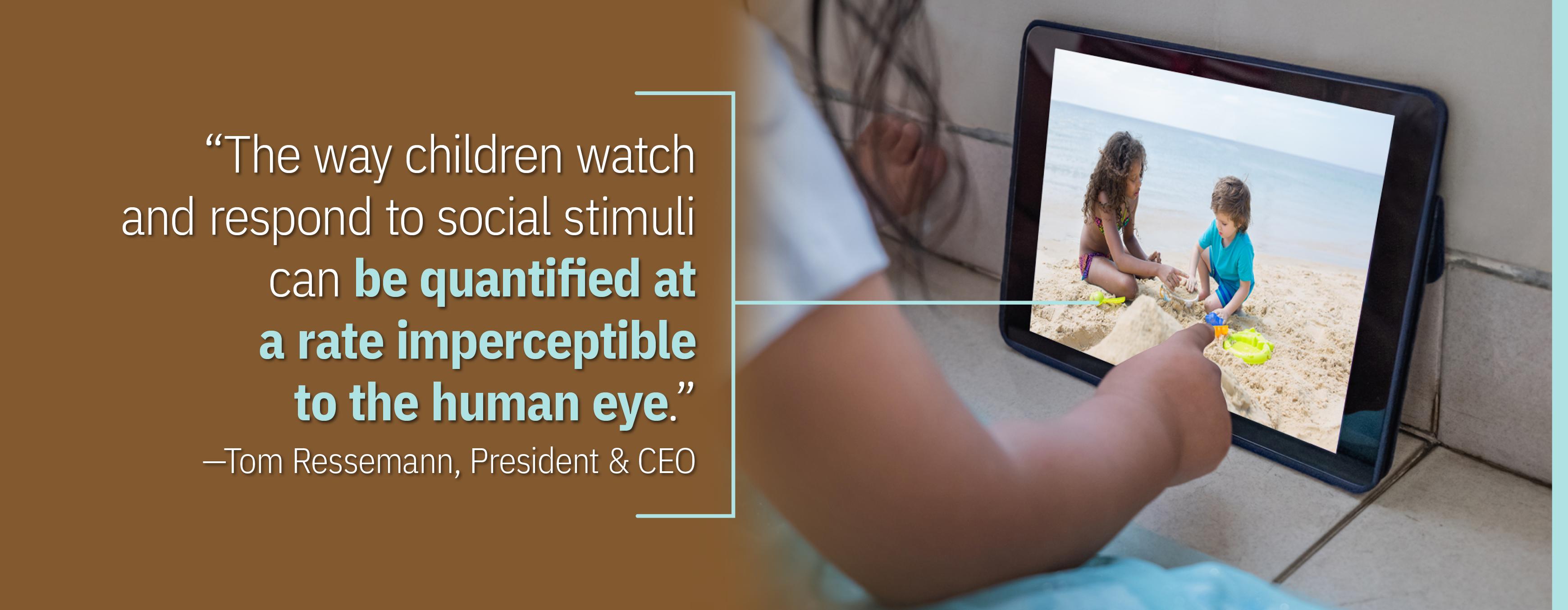

The human brain in the first days of life is a marvelous bundle of neurons, hundreds of billions of them, ready to be connected to form the person to be.
Those connections are made at an astounding pace in the years following birth. Here, social interactions are a driving force. Plentiful, positive interactions forge the neural connections that develop the brain.
For children who come to have autism – the developmental condition that impairs a person’s capacity to communicate and interact – these interactions have a special urgency. When made before the age of 4, encouraging, deliberate interactions are tied to “significant gains in cognition, language and adaptive behavior,” concludes a 2017 paper in the journal Psychology Research and Behavior Management.
The problem is, the median age of diagnosis for autism is more than a full year later, according to the CDC. If there were a way to spot autism much earlier, children would get the planned interventions that are essential to their brain development.
This is what makes the technology of GRA-backed startup EarliTec Dx so crucial.

EarliTec has developed technology that measures a person’s visual attention, thus opening the door to an earlier diagnosis of autism. Based on years of research by GRA Eminent Scholar Ami Klin and colleague Warren Jones, the technology is an investigational diagnostic. In June 2022, the FDA awarded the diagnostic 510(k) clearance.
Meaning: It’s quite possible that in the not-so-distant future, parents and doctors may have a new tool to determine the likelihood a child as young as 16 months has autism – adding years of early interventions that are now being missed.
THE EYES HAVE IT
EarliTec’s EarliPointTM test tracks, at an extraordinary rate, what a child is looking at moment-by-moment, and compares this attentional focus to that of many other children.
Suppose a video is played, with scenes of kids sharing a toy or a teacher working a hand puppet. Typically developing children will focus on the same points in these social scenes about 80 percent of the time. This is known because EarliPoint’s tracking can assess an eye’s focal points at 120 times per second, then compare each data point to similar measurements collected over several years and stored in a database.
These earlier measurements, all clinically validated, include the visual attention data of children who were later diagnosed with autism – kids who focused on points in the video scenes that were different from those that held the attention of typically developed children.

“The way children watch and respond to social stimuli can be quantified at a rate imperceptible to the human eye,” says Tom Ressemann, EarliTec’s president and CEO. “A child’s attention that deviates from that of a typically developing child yields valuable data as to how that child perceives the world around them.”
The current standards for evaluating children with autism include instruments such as ADOS-2 and Mullen Verbal and Non-Verbal scale. These standards are the foundation for validating the EarliPoint test, a measurement informed by technology.
A VENTURE IS BORN
Tracking the visual attention of children to diagnose autism was an idea that surfaced in a bit of serendipity.
In the late 1990s, Yale student Warren Jones was sharing the results of how he’d used lasers to follow the head movements of adult volunteers watching a video. Jones rendered these movement patterns as drawings – works of art.
Ami Klin sat on Jones’ thesis committee. He’d been recruited to the Yale Child Study Center nearly a decade earlier after developing his own novel contraption while a doctoral student at the Medical Research Council in London. The year was 1988, and Klin had been researching children with autism. For his thesis, he created a toy with two buttons for kids to press. One button played the voice of the child’s mother, the other played a garbled voice.
Klin discovered that typically developing children consistently wanted to hear their mother’s voice – but children with autism had no preference as to which voice was played.
Years later, when Klin was listening to Jones present his thesis, he was intrigued by the tracking technology. By then, Klin was a well-established researcher on autism spectrum disorders. He and Jones teamed up, and in 1999, they began to track eye movements in people with autism.

In 2011, GRA worked with Emory and Children’s Healthcare of Atlanta to recruit Klin and his team, which included Jones, from Yale. The Marcus Foundation more than matched the state of Georgia’s investment, and Klin was named a GRA Eminent Scholar and the director of the Marcus Autism Center. Today, the center is one of 5 NIH-designated Autism Centers of Excellence.
Along the way, GRA added investment to help purchase materials and equipment for the center’s Applied Research Technologies Laboratory, which researchers and engineers used to refine and test the data model. And in 2012, GRA’s venture development program made the first of three seed investments to help move the technology toward the marketplace. Those investments helped give rise to EarliTec Diagnostics, and they were leveraged in a big way early in 2022, when EarliTec generated a $19.5 million round of private investment.
In the spring of 2023, EarliTec announced that its EarliPoint technology would be available for ASD evaluation later in 2023.
THE POTENTIAL OF EARLITEC
The CDC reports that 1 in 44 children in the U.S. develop autism spectrum disorder, a statistic that boggles the mind. “Unfortunately, it can be difficult for children to receive an expert clinical diagnosis,” says Julie Rusch, who heads marketing for EarliTec. “While general screenings are commonplace, expert assessments are costly and can be difficult to arrange, especially for families in communities with limited access to those assessments.”
If eventually approved for diagnostic use, the EarliPoint system would not only make the crucial earlier diagnosis possible – it could also make it achievable.
“Our vision is to make diagnosis and treatment more accessible to children where they live,” Ressemann says. “We’re excited to bring this important new development to the autism community.”
With that earlier diagnosis, the interventions of purposeful, nurturing interactions could begin.
So could the hope of a better life ahead.